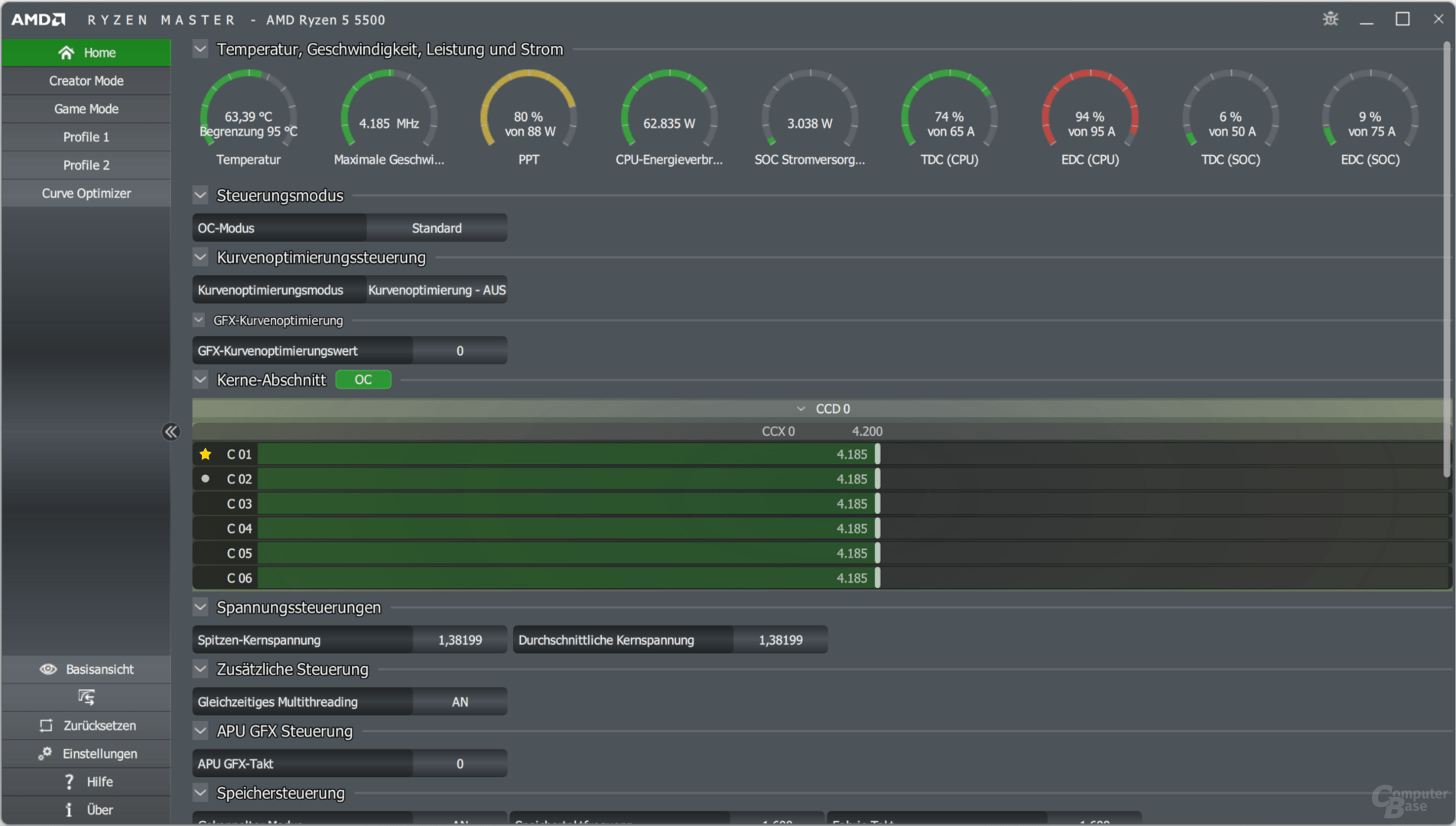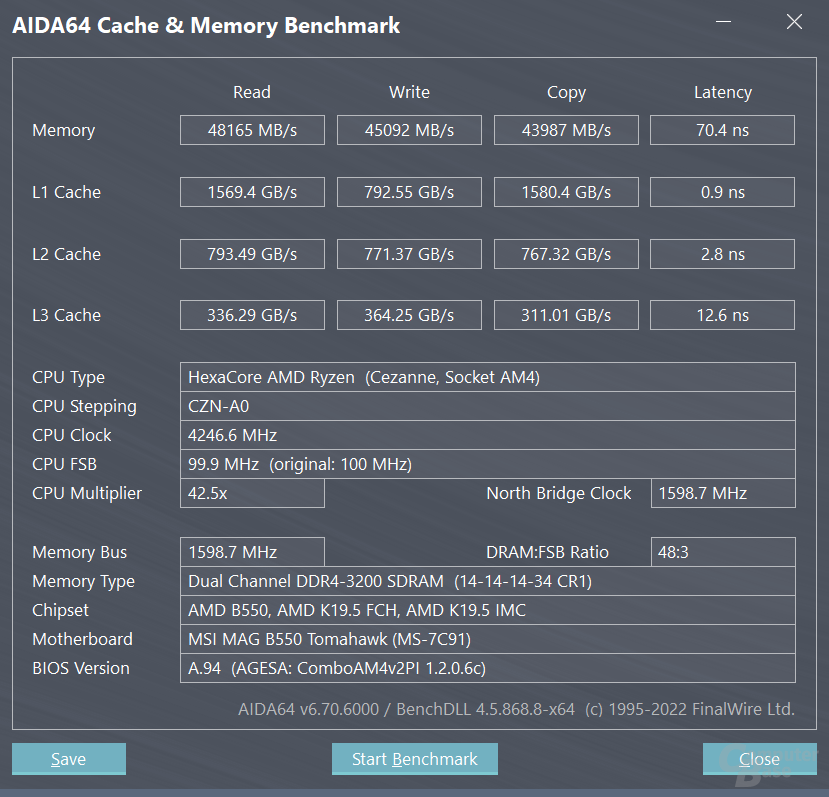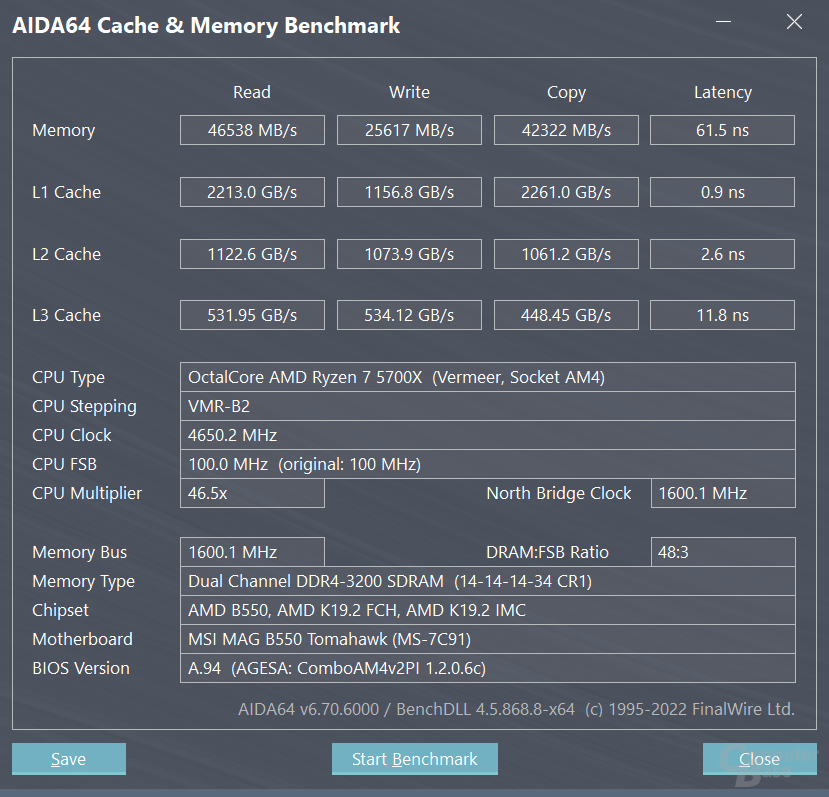AMD's Ryzen 7 5700X and Ryzen 5 5500 finally complete the Zen 3 entry-level range. But the CPUs are only partially convincing in the test. The Ryzen 7 5700X has been expected since the end of 2020, while the Ryzen 5 5500 finally marks a cheap 6-core processor, but now the opponent is Intel Alder Lake.
Table of Contents
- 1 AMD's smallest 8- and 6-core Zen 3 CPUs are too late
- Late laggards with Zen 3
- The AMD Ryzen 7 5700X in detail
- The AMD Ryzen 5 5500 in detail
- Compatibility with the AM4 platform
- Single-core benchmarks
- Multi-core benchmarks
- Game benchmarks in 720p, FHD and UHD
- 3 Power Consumption, Efficiency, Temperature and Overclocking
- Power Consumption: Idle and Single-Core
- Power Consumption: Multi-Core
- Temperatures: Not critical even under load
- Overclocking: CPU and RAM without restrictions
- 4 Conclusion
-
 AMD Ryzen 5 5500 on MSI B550 board
AMD Ryzen 5 5500 on MSI B550 board
< li>2 Benchmarks in applications and games
< /ol>
Late latecomers with Zen 3
For a long time, almost too long for many observers, AMD took its time before the company launched the Ryzen 5000 portfolio consisting of Ryzen 9 5950X & 5900X, Ryzen 7 5800X and Ryzen 5 5600X: The series came onto the market in November 2020, and the addition only followed in spring 2022. Special models for OEMs were only available in selected markets and the Zen 3 APUs (Ryzen 5000G) were and are not bargains either.
Arrived to stay parallel to Zen 4
A real counter to Intel's Alder Lake is the addition – apart from the Ryzen 7 5800X3D (test), which is at least on par with the FPS in games and far outpaced in terms of efficiency – but hardly any more, but rather a cornerstone for the future. Because at the start of Zen 4 in the second half of the year, a game similar to Zen 3 is expected: the expensive high-end segment gets the new products first, the entry remains the same. That's why the new AMD Ryzen 7 and Ryzen 5 are here to stay for quite a while.
In the test, ComputerBase takes a look at the two most interesting variants of the spring line-up – of course in addition to the AMD Ryzen 7 5800X3D, which has already been extensively tested. The Ryzen 7 5700X with 8 cores and 16 threads at 65 watts and the cheapest model with six cores: the Ryzen 5 5500 are on the test bench.
The newcomers to the AMD lineup
Four models complement four existing ones, according to AMD's plan. The focus was on the cheaper market for the masses, which is why a maximum of 8 cores come into play – the two Ryzen 9 with 12 and 16 cores remain alone at the top of the DIY market in this generation. In the overview, this also looks logically structured.
The price classification in retail is problematic for all new processors. All newcomers are guided by the RRP, which is good news. But after almost 1.5 years on the market, the prices of the long-established CPUs have dropped significantly. As a result, the new models are often only 20 euros below and therefore sometimes make no sense – the new Ryzen 5 5600 is the best or worst example here and hardly worth a look. But the 5700X is also close to the limit, after all, a changed TDP classification speaks in its favor as a further differentiation from the previous Ryzen 7. With changing prices, however, the portfolio will increasingly drift apart and the smaller processors will (hopefully) be more interesting.
Because the new AMD processors also have the price problem elsewhere, namely when looking at the competition. With the Intel Core i5-12400 and 12500 (test) as well as the Intel Core i5-12600K and Intel Core i7-12700 (test) there are extremely strong specimens that are very suitable for all situations and from 170 to almost 400 euros are set up.

The AMD Ryzen 7 5700X in detail
The AMD Ryzen 7 5700X belongs to the family of processors called Vermeer, which rely on chiplet design. An eight-core CPU die is flanked on the package by an I/O die (IOD) that houses memory controllers, PCIe lanes, and more. It is therefore no different product than the Ryzen 7 5800X presented 1.5 years ago – with the exception of the TDP. It is 65 instead of 105 watts for the 5800X.
The TDP is also linked to the limit value that CPUs can consume when using the turbo with sufficient cooling. In the 105 watt variants, this is always a factor of 1.35 of the TDP, i.e. 142 watts. With the 65-watt models, as with the Ryzen 5 5600X, a smaller factor applies: 76 watts are ultimately defined as the limit value. The Ryzen 7 5700X also receives exactly these 76 watts as a maximum power target.
 AMD Ryzen 7 5700X is always pushing the power limit
AMD Ryzen 7 5700X is always pushing the power limit This already makes for significantly larger differences within the Ryzen 7 on paper: a Ryzen 7 5800X can consume 142 watts, while a Ryzen 7 5700X only consumes 76 watts. This will be reflected in the clock and thus also in tests. Especially when all cores are required and want to access this performance.
The AMD Ryzen 5 5500 in detail
< p class="p text-width">The smallest 6-core processor of the 5000 series is a completely different one, despite the similar-sounding name. There is no Vermeer under the heat spreader here, but the single monolithic die of the APUs from the Cezanne family. An APU, i.e. a processor with a graphics unit, is no longer the solution here because AMD has deactivated the iGPU.
AMD's APUs separate small technical details from the classic CPUs. In addition to the individual die on the package, which provides all the functions, this series only has to make do with half the space required by the L3 cache: 16 instead of 32 MB. This can definitely have an impact on performance. Not so much in classic applications, but all the more clearly in games, as the test of the APUs Ryzen 5 5600G and Ryzen 7 5700G revealed last summer.
 AMD Ryzen 5 5500 with room for improvement thanks to 88 watt PPT
AMD Ryzen 5 5500 with room for improvement thanks to 88 watt PPT But the single chip also has advantages. The “old design” of the IOD in 14/12 nm technology of the Vermeer processors, for example, swallows a lot of power, the Ryzen 5 5500 is much more energy-efficient when idling and in many partial load scenarios. And although its TDP is 65 watts, in contrast to the Ryzen 7 5700X, it can surprisingly go up to 88 watts in turbo – the classic AMD TDP turbo factor of 1.35 is here again. However, this potential is usually not exhausted, AMD has limited the clock too much for that.
Compatibility with the AM4 platform
With their specifications, both newcomers sit below the models that are already known and have been available for a long time, which is why support for socket AM4 with 400 and 500 chipsets on the market is also given in almost every current mainboard. The AMD Ryzen 7 5700X can use its maximum clock of 4.65 GHz in turbo, which was also reproduced in the test, the Ryzen 5 5500 reaches 4.25 GHz. This is typical for AMD's processors – here we like to add a few MHz if the parameters are right. The manufacturer has learned from old mistakes of the past since Ryzen 5000.
Image 1 of 2
 AMD Ryzen 5 5500 on MSI B550 board
AMD Ryzen 5 5500 on MSI B550 board  AMD Ryzen 7 5700X on MSI B550 board
AMD Ryzen 7 5700X on MSI B550 board In the near future, support could even be expanded a bit: AMD is planning with AGESA 1.2.0.7 partners to make selected older mainboards with AMD 300 chipsets (X370, B350) compatible with the new CPUs. From these boards in particular, a cheap upgrade option could open up, because as the test makes clear, the processors are best suited for customers who already have a board.
(*) The links marked with an asterisk are affiliate links. In the case of an order via such a link, ComputerBase participates in the sales revenue without increasing the price for the customer.
Page 1/4 Next page
Benchmarks in applications and games

